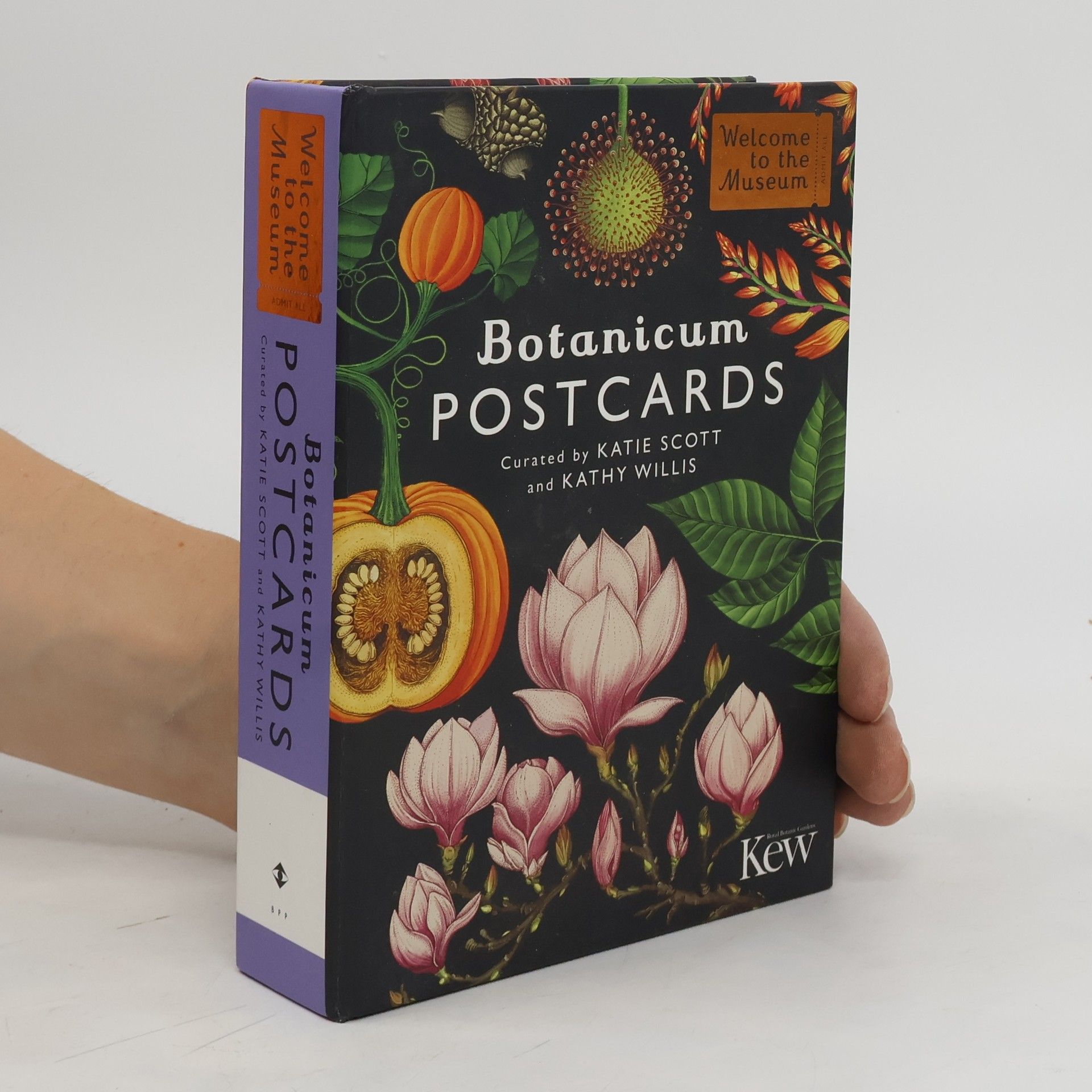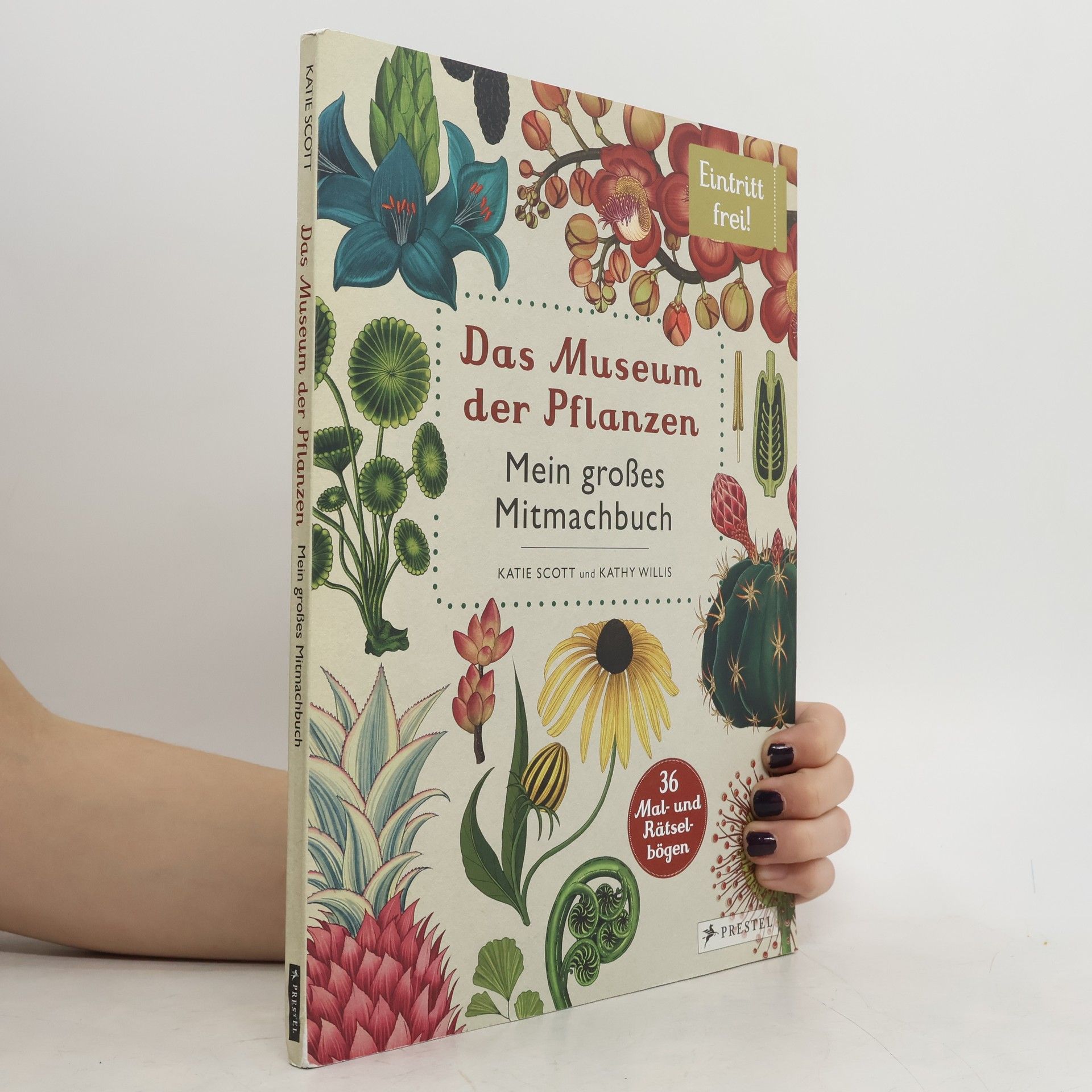Recorrido por el Jardín Botánico de Kew a través de ilustraciones comentadas
Kathy Willis Libros
Kathy Willis, Directora de Ciencia en los Reales Jardines Botánicos de Kew, Inglaterra, escribe sobre la evolución de las plantas y la importancia de la biodiversidad, dirigiendo ahora su atención a lectores más jóvenes. Su obra enfatiza la interconexión de la naturaleza y nuestro impacto sobre ella. A través de su escritura, busca inspirar la curiosidad por el mundo vegetal.






Plants: From Roots to Riches
- 368 páginas
- 13 horas de lectura
Tie-in to the landmark 25-part BBC Radio 4 series with Kew Gardens.
This collection of 50 postcards features Katie Scott's incredible illustrations of all things botanical. From the rarest orchid to the common pineapple, each image is perfect for sending to friends or pinning on your wall -- back of box
Dr. Kathy Willis presents a groundbreaking exploration of the connection between nature and human health, revealing how our well-being is intertwined with the natural world. Through insightful analysis, the book encourages readers to perceive their environment differently, highlighting the profound impact of nature on physical and mental health. This work invites a deeper appreciation for the outdoors and promotes a holistic understanding of wellness.
Botanicum Activity Book
- 72 páginas
- 3 horas de lectura
Bursting with fascinating facts and puzzles, this book offers hours of entertainment to artists and nature lovers. Beautiful and inspiring, the myriad activities in this book challenge the reader to discover something new and use their imagination to draw, decorate and design on every pull-out page.
Good Nature is a groundbreaking exploration that reveals how, if we bring nature more into our lives, it can help improve our health and well-being in so many unexpected ways. Oxford professor Kathy Willis has spent her career researching fossilised plants and plant matter - but when she stumbled across a study that showed that patients recovering from surgery improved faster jus[Bokinfo].
Good Nature
Improve Your Health and Happiness with Nature – One Simple Step at a Time
- 336 páginas
- 12 horas de lectura
'Should be mandatory reading ... A superb book' CHRIS VAN TULLEKEN 'Fascinating, comprehensive and highly convincing' OBSERVER 'I defy anyone to read this book and not embrace a life with plants!' ISABELLA TREE We know the benefits of eating your greens, getting your 'five a day' or thirty plants a week. But what about the other ways that nature can help us lead healthier - and happier - lives? In this revolutionary book, Professor Kathy Willis reveals the surprising science behind the natural world and how we can harness its benefits to improve our health: whether it's gardening with your bare hands to boost your gut microbiome; letting the scent of roses make you a calmer and safer driver; or tuning into birdsong to help reduce stress - and even pain. With applications for everything from which way we walk to work to choosing where our kids go to school, Good Nature brings the latest scientific research into our homes and workplaces, showing us how we can live better, happier, healthier and longer.
Rośliny są wszędzie. W najwyższych górach i najgłębszych dolinach, na biegunach i na równiku, na lądzie i w wodzie. Najmniejsze z nich są sto razy mniejsze od ziarenka soli, największe – wyższe niż 20-piętrowy budynek. Bez nich by nas nie było. Rośliny wytwarzają tlen, którym oddychamy. Dają nam jedzenie i lekarstwa, tkaniny, z których szyjemy ubrania, i materiał do budowy domów. Skąd się wzięły? Jak wyglądały pierwsze z nich? Kiedy urósł pierwszy las? Kiedy pojawiły się pierwsze kwiaty? Które rośliny są największe, najrzadsze, najdziwniejsze, najbrzydsze, najbardziej długowieczne? Dlaczego niektóre paskudnie śmierdzą? Wejdźcie do Botanicum , a wszystkiego się dowiecie.
Botanicum Activity Book

